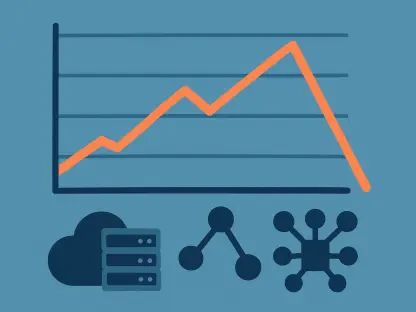Cybersecurity experts and organizations alike are increasingly focusing on the security challenges faced by on-premises Microsoft SharePoint servers. With digital transformation, information systems have become prone to unprecedented threats, requiring awareness and proactive measures to ensure data integrity and confidentiality. Recent reports have highlighted a series of vulnerabilities in Microsoft SharePoint, the popular collaboration platform, making it a prime target for malicious attacks. These vulnerabilities primarily affect on-premises deployments in various sectors like government, healthcare, and large enterprises. As organizations rely heavily on SharePoint for storing and managing sensitive data, the potential risks posed by these vulnerabilities cannot be overstated. Understanding and addressing these vulnerabilities is critical for organizations to safeguard their data and infrastructure from potential breaches.
Details of the Vulnerabilities
The critical vulnerabilities identified in Microsoft SharePoint, designated as CVE-2025-49704, CVE-2025-49706, CVE-2025-53770, and CVE-2025-53771, pose significant security concerns. Each of these vulnerabilities carries distinct risks that can be exploited by threat actors to gain unauthorized access and execute arbitrary commands in vulnerable environments. Among these, CVE-2025-49704 involves improper control of code generation that allows attackers to execute code remotely. This vulnerability, with a severity score of 8.8, underscores its potential impact. CVE-2025-49706 pertains to improper authentication mechanisms, enabling unauthorized access and spoofing attacks. The chained utilization of these vulnerabilities can lead to highly sophisticated attacks capable of compromising the security of SharePoint systems.
CVE-2025-53770 and CVE-2025-53771 further amplify the risk level with scores of 9.8 and 6.5, respectively. These vulnerabilities permit remote code execution and spoofing through deserialization of untrusted data and improper limitations on directory paths. What makes these vulnerabilities especially concerning is the interconnectedness of SharePoint with other Microsoft services such as Office, Teams, and OneDrive. Exploiting these vulnerabilities could result in broader access to valuable organizational data, making containment within SharePoint alone unlikely. Immediate and robust mitigation strategies are imperative to counteract these potential exploits.
Active Exploitation and Scope of the Attack
Numerous organizations have already reported active exploitation of these SharePoint vulnerabilities, underscoring the urgency for implementing security measures. Cyber adversaries have been observed bypassing traditional identity controls like multi-factor authentication and single sign-on, gaining privileged access to sensitive systems. The implications of such breaches are far-reaching, often involving data exfiltration, deployment of persistent backdoors, and theft of cryptographic keys. These intrusions exploit SharePoint’s integration across Microsoft’s digital ecosystem, consequently extending their reach beyond just the platform’s immediate environment.
Notably, the offensive security community has demonstrated the feasibility of exploiting these vulnerabilities in practical scenarios. At events like Pwn2Own, experts successfully chained these vulnerabilities to simulate unauthorized access, emphasizing their practical threat. Microsoft has already documented multiple instances of exploitation-related activities involving these vulnerabilities. In light of these developments, organizations utilizing on-premises SharePoint must acknowledge the pressing threat landscape and proactively engage in protective measures.
Mitigation Strategies and Interim Guidance
Addressing these vulnerabilities requires a concerted effort involving patch management, incident response, and consistent security practices. Organizations must prioritize applying all available security patches supplied by Microsoft. However, patching alone may not suffice to fully secure at-risk systems. As such, rotating cryptographic materials, resetting affected credentials, and engaging professional incident response teams are crucial steps in mitigating risks. Ensuring systems are disconnected from the internet during remediation can prevent further exploitation attempts while protective measures are deployed.
Microsoft and cybersecurity specialists have been releasing comprehensive guidance and updates to aid organizations in protecting their SharePoint deployments. Implementing Microsoft’s recommendations, alongside regular audits of system configurations and behaviors, can help reduce susceptibility to potential exploits. Staying informed of the evolving threat landscape and adopting a proactive stance in threat detection and response are essential in defending against such security incidents, preserving both operational continuity and data security.
Palo Alto Networks Product Protections
In response to emerging threats targeting SharePoint vulnerabilities, several security solutions have been crafted to bolster defense mechanisms. Advanced protective measures, including Palo Alto Networks’ offerings, aim to identify, block, and report exploitation activities. Cortex Xpanse, Cortex XDR, and other Next-Generation Firewall services are designed to inform and equip organizations with tools to safeguard exposed SharePoint devices. These systems can efficiently detect and neutralize suspicious activities linked to the identified vulnerabilities and swiftly counteract attempts to compromise data integrity.
Organizations can also opt for enhanced security services, like Xpanse Attack Surface Testing, which assess and escalate vulnerabilities through external scanning capabilities. These proactive assessments are instrumental in maintaining heightened alert levels and preemptively thwarting exploitation endeavors. Security service products are routinely updated in alignment with evolving cyber threat intelligence, ensuring comprehensive protection across different layers of potential threats targeting SharePoint infrastructures.
Conclusion
The year marked a pivotal moment in addressing vulnerabilities within Microsoft SharePoint servers, with tangible steps taken towards fortifying on-premises deployments. Through enhanced collaboration between Microsoft, security researchers, and organizations globally, critical vulnerabilities have been identified and systematically targeted for remediation. As organizations continue to evolve their digital landscapes, the need for robust cybersecurity frameworks and proactive risk management grows more crucial. Incorporating comprehensive security measures, such as timely patching, cryptographic key rotations, and professional incident responses, are effective methodologies in countering modern threat environments. More importantly, staying informed about potential threats and maintaining a vigilant stance will be key in safeguarding SharePoint server environments against future cybersecurity challenges.









